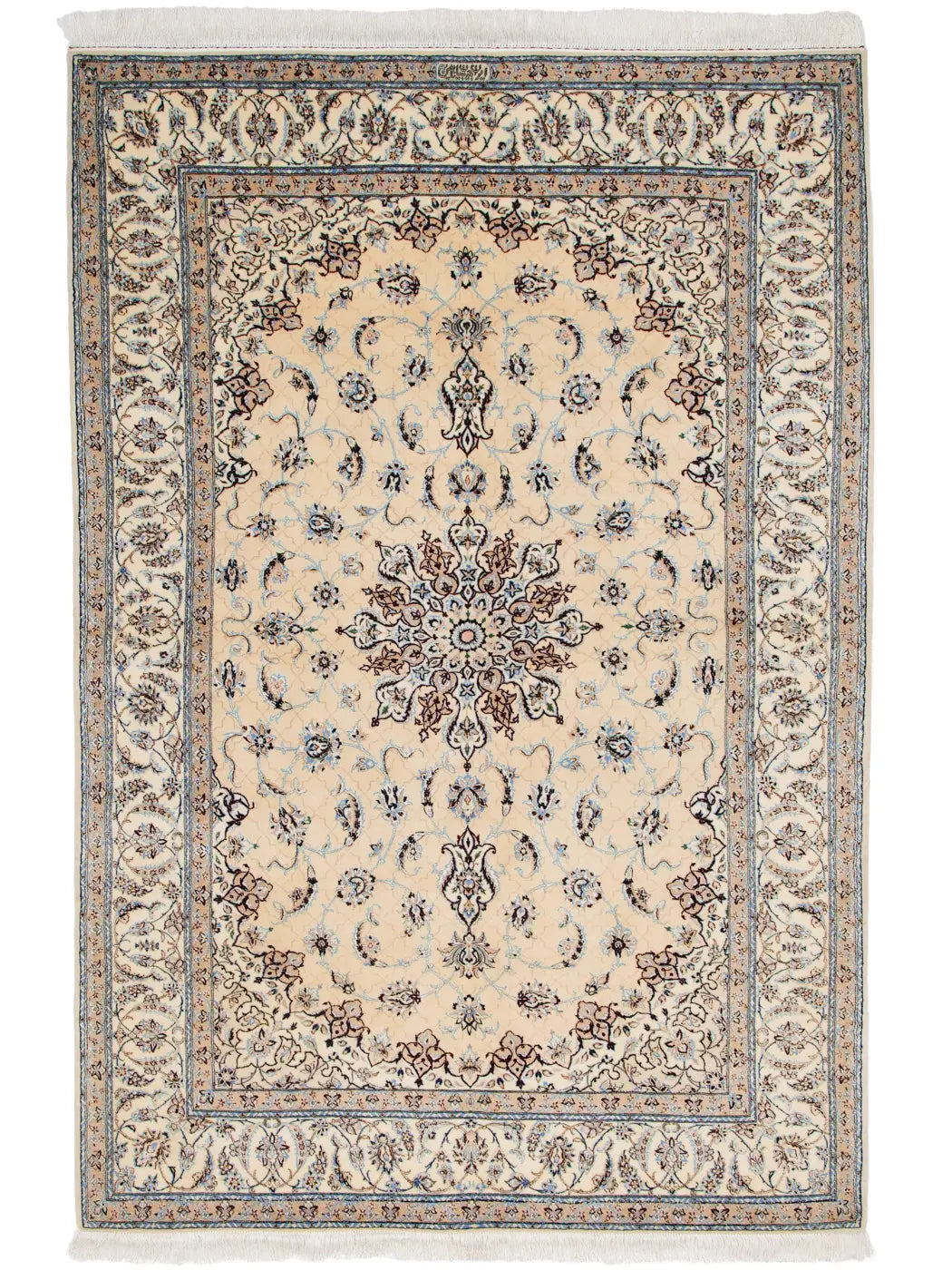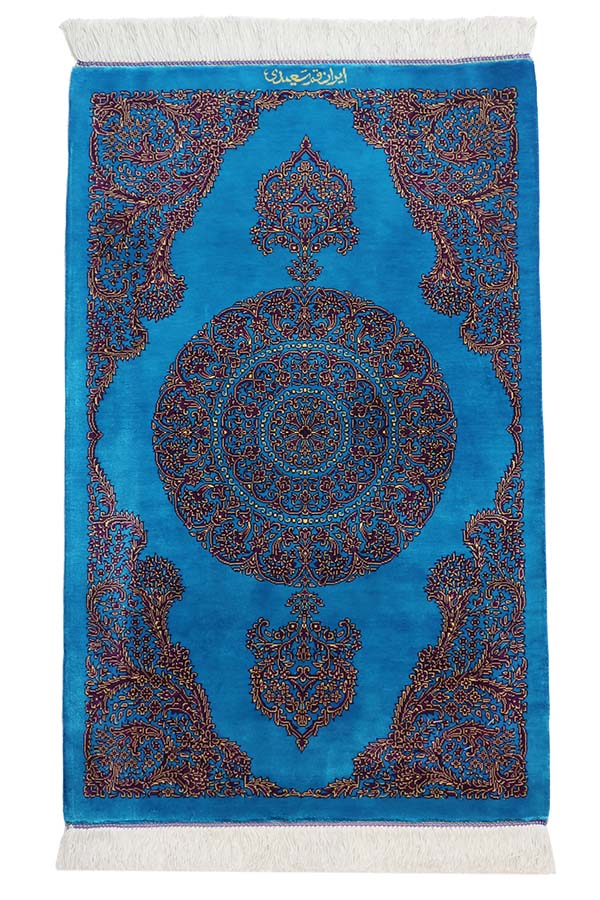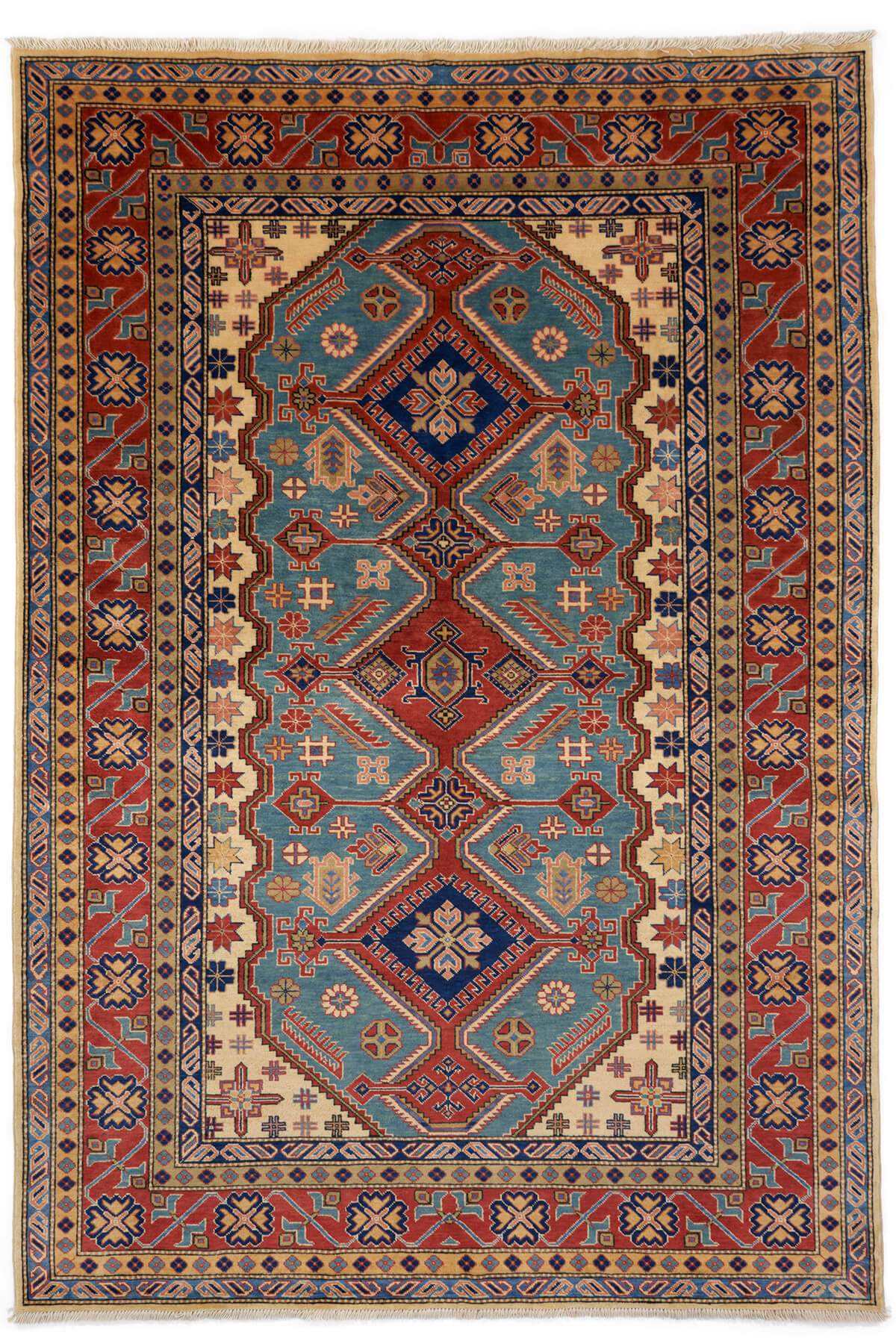Sheikh Safi's design is called "Sheikh Safi design" because it has a large, gorgeous medallion like a flower at the center, with hanging lamps above and below it, and a pattern in the corners that divides the medallion into four parts. Sheikh Safi-al-Din, the founder of the Safavid dynasty, died at the age of 85 in 1334, and his mausoleum was built in Ardebil on the west coast of the Caspian Sea.
In the 17th century, a great ruler known as Shah Abbas I visited Ardebil in the 1610s and restored the dilapidated tomb of Sheikh Safi, donating his precious personal treasures to the tomb, including Qurans, carpets and Chinese porcelain, a donation known as "paghuf" and recognized as a good religious deed.
One of the most notable Persian carpets made during Sheikh Safi's time is the Ardabil Carpet, housed in the Albert Museum (UK). This carpet was presented to the Sheikh Safi al-Din Complex in Ardabil in 1539 and became the epitome of Persian carpets. The design features Shah Abbas plants, a deep blue colour symbolising holiness, and bergamot symbolising sunlight. The carpet was commissioned by Shah Tahmasb in the mid-16th century for the Ardabil temple, and reflects the rich cultural and spiritual heritage of the Safavid period.
In the 17th century, a great ruler known as Shah Abbas I visited Ardebil in the 1610s and restored the dilapidated tomb of Sheikh Safi, donating his precious personal treasures to the tomb, including Qurans, carpets and Chinese porcelain, a donation known as "paghuf" and recognized as a good religious deed.
One of the most notable Persian carpets made during Sheikh Safi's time is the Ardabil Carpet, housed in the Albert Museum (UK). This carpet was presented to the Sheikh Safi al-Din Complex in Ardabil in 1539 and became the epitome of Persian carpets. The design features Shah Abbas plants, a deep blue colour symbolising holiness, and bergamot symbolising sunlight. The carpet was commissioned by Shah Tahmasb in the mid-16th century for the Ardabil temple, and reflects the rich cultural and spiritual heritage of the Safavid period.



